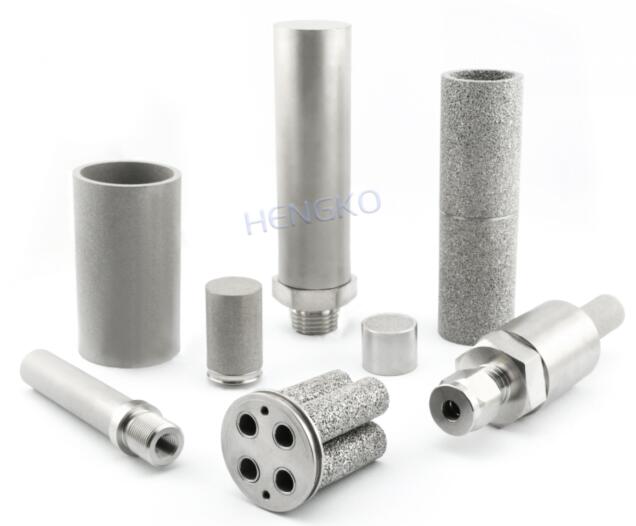All You Should Know About Sintering
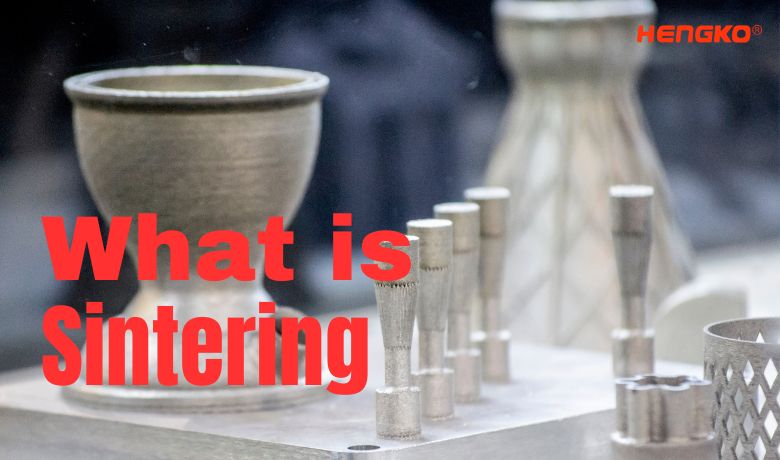
Sintering plays a crucial role in the manufacturing industry, enabling the production of intricate and durable components. Understanding the fundamentals of sintering is essential for engineers, researchers, and enthusiasts alike. This article aims to delve into the concept of sintering, explore its process, discuss its applications, and highlight its advantages and limitations.
What is Sintering?
Sintering is a process that involves compacting powdered materials into a solid mass by applying heat. Unlike traditional melting processes, sintering does not reach the material's melting point. Instead, it utilizes the diffusion of atoms across the particles, which leads to bonding and densification. This process results in a solid structure with improved mechanical properties.
Sintering also has a broad and narrow sense. For a broad sense, sintering is a process that the loose powder is consolidated into blocks by a solid bonding force at a certain temperature. But sintering in the field of iron making is a process that combines iron ore powder and other materials containing iron into the excellent metallurgical performance artificial block by fusion, its production is sinter. They involve different physicochemical processes Although they both used the term sintering.
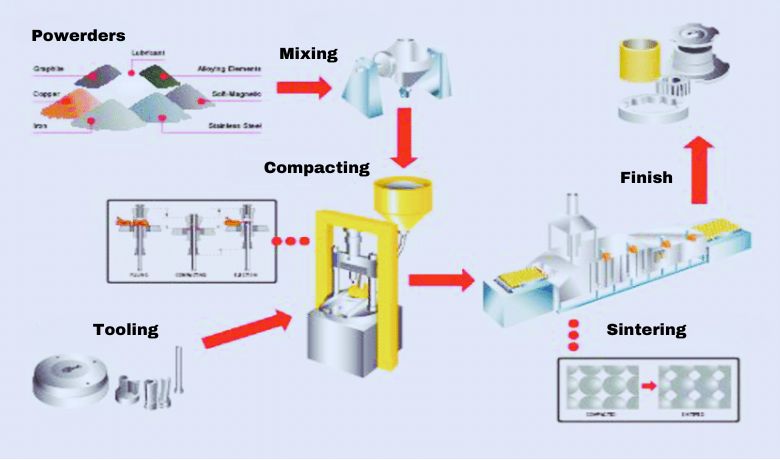
The Sintering Process
The sintering process comprises several stages. Initially, the raw material is formed into a specific shape, usually in the form of a powder. This powder is then compacted using pressure to ensure uniformity and eliminate voids. Next, the compacted material is subjected to controlled heating in a sintering furnace. The temperature is carefully regulated to facilitate particle bonding without causing complete melting. During heating, the particles undergo diffusion, leading to neck formation and densification. The final stage involves cooling the sintered product, allowing it to solidify into a rigid and cohesive structure.
The powder sintering we used to say is the metal powder or powder compact. It is a craft process of obtaining the material or product in the required strengths and peculiarities due to the physical and chemical bond between the particles at a temperature below the melting point of the principal component. HENGKO has a series of powder sintering products of various kinds specifications and sizes including disc filter, cup filter, candle filter, sheet filter and so on. Our sintering stainless steel product has the advantage of high strength, Good permeability, Accurate filtration accuracy and corrosion resistance, suitable for many areas. Customized service also be provided as you requested.
Each step in sintering process is interactional, and concentrate is a extremely important step in the sintering process, so what does the concentrate mean?Concentrateis the step that take action to optimize the raw and fuel material, making it become the furnace burden that meet the requirements of strengthening blast furnace refining before the raw and fuel material entering the blast furnace. Higher technical and economic indicators and economic benefits can be obtained after the concentrateis is used in blast furnace smelting. What is called "make the best use of everything" and make the best use of resources. It is also a kind of awareness of saving and environmental protection.
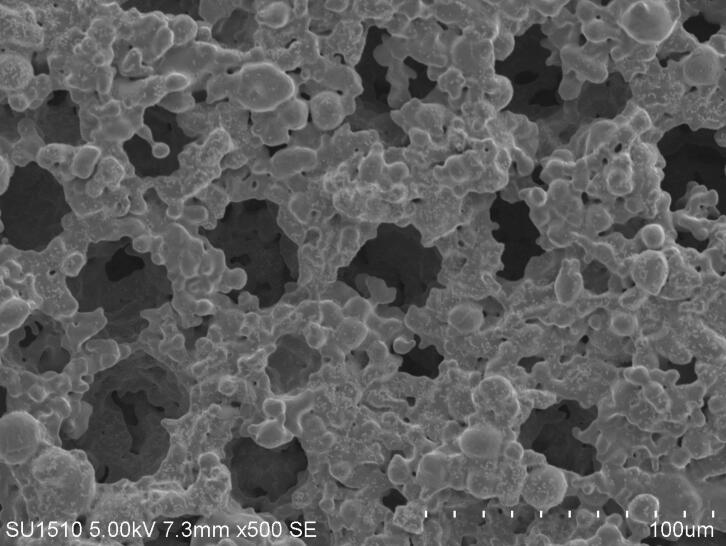
Factors Affecting Sintering
Several factors influence the sintering process, including temperature, heating rate, pressure, particle size, and composition. Temperature plays a crucial role in determining the sintering kinetics and the resulting material properties. The heating rate affects the densification process, as rapid heating may lead to uneven particle bonding. Pressure is applied during compaction to enhance particle rearrangement and eliminate porosity. Particle size and composition impact the sintering behavior, with smaller particles and homogeneous compositions promoting better densification.
From the literal point of view of the word sintering, the word burning is to use fire, there must be flame accompanied by high temperature. And the process of sintering must be done in high temperatures. The high temperature is made by the burning of fuel. The temperature range, the burning speed, the width of the burning band, the atmosphere in the sintered material, etc will affect the the progress of sintering process and the quality of final sintered products. And those elements are related to the physical and chemical properties of fuel and dosage. Therefore, the Physical and chemical properties of the fuel are an important element that affects the sintering process.
Metaphor something can not exist without the basis on which they live. Fuel and raw materials are similar to the skin and wood that has a relationship are indispensable. Without either, The sintering process can not take place. But Sintered fuel mainly refers to the solid fuel burning in the material layer. The most commonly used is pulverized coke powder and anthracite, etc. Sintered raw materials, mainly have the iron ore, the manganese ore, the solvent, the fuel and the industrial waste.
Different Types of Sintering
Sintering encompasses various techniques that are classified based on the mechanisms and conditions involved in the process. Understanding the different types of sintering is crucial for selecting the appropriate method for specific applications. Here are some common types of sintering:
1 Solid-State Sintering
Solid-state sintering, also known as diffusion bonding, is a widely used sintering method. In this process, powdered materials are subjected to elevated temperatures below their melting points. As the temperature increases, atomic diffusion occurs between adjacent particles, facilitating the formation of necks and bonding. The elimination of voids and the rearrangement of particles lead to densification and the formation of a solid mass.
Solid-state sintering is commonly employed in the production of ceramics, such as porcelain and alumina, as well as in the sintering of metal powders. It is favored when preserving the chemical composition and purity of the material is crucial. By carefully controlling the sintering parameters, such as temperature, time, and pressure, desired material properties can be achieved.
2 Liquid-Phase Sintering
Liquid-phase sintering involves the addition of a liquid phase to aid in particle rearrangement and bonding during the sintering process. The liquid phase, often a low-melting-point material, acts as a binder or flux, reducing the sintering temperature required for densification. This method is particularly useful when sintering materials with high melting points or when enhancing the densification rate is desired.
During liquid-phase sintering, the liquid phase spreads between the particles, promoting particle rearrangement and enhancing the neck formation and densification. The presence of the liquid phase also enables the removal of impurities and facilitates the sintering of materials with complex compositions.
Liquid-phase sintering is commonly used in the production of cemented carbides, where tungsten carbide particles are bonded using a cobalt-based binder. It is also employed in the sintering of certain ceramics and metallic alloys, such as stainless steel.
3 Activated Sintering
Activated sintering, also known as field-assisted sintering or spark plasma sintering, is an innovative sintering technique that utilizes external energy sources to promote densification. It involves the application of an electric field, electric current, or electromagnetic radiation to enhance the sintering process.
The external energy source accelerates atomic diffusion, leading to rapid neck formation and densification. The application of electrical energy generates localized heating, reducing the sintering time and enabling the sintering of materials at lower temperatures. This technique offers advantages such as improved densification, reduced grain growth, and enhanced control over microstructure and properties.
Activated sintering finds applications in various fields, including the production of advanced ceramics, functional materials, and composites. It is particularly advantageous for materials with high melting points, complex compositions, or limited sinterability.
4 Other Types of Sintering
Apart from the aforementioned types, there are several other specialized sintering methods tailored to specific applications. These include microwave sintering, where microwave energy is used to heat and sinter the material, and pressure-assisted sintering, which combines pressure and heat to enhance densification.
Additionally, selective laser sintering (SLS) and electron beam sintering (EBS) are additive manufacturing techniques that utilize energy beams to selectively sinter powdered materials, layer by layer, to produce complex three-dimensional objects.
Each type of sintering offers unique advantages and is selected based on the material properties, desired outcomes, and specific applications.
Applications of Sintering
Sintering finds extensive applications across various industries due to its ability to transform powdered materials into solid components with enhanced properties. Let's explore some of the key areas where sintering is widely employed:
1 - Ceramics
Ceramics are one of the primary fields where sintering is extensively used. Sintered ceramics exhibit improved mechanical strength, hardness, and thermal stability. Sintering is employed in the production of ceramic tiles, sanitaryware, cutting tools, refractory materials, and electrical insulators. By carefully controlling the sintering parameters, ceramic materials can achieve the desired density, porosity, and microstructure for specific applications.
2 - Metallurgy
In metallurgical applications, sintering is utilized to manufacture a wide range of metal components. This includes gears, bearings, bushings, automotive parts, and structural components. Metal powders, such as iron, aluminum, and stainless steel, are compacted and sintered to produce solid parts with excellent mechanical properties. Sintered metal components often exhibit higher strength, wear resistance, and dimensional accuracy compared to traditional cast parts.
3 - Composites
Sintering plays a vital role in the production of composite materials, where two or more distinct materials are combined to create materials with enhanced properties. In the manufacturing of metal matrix composites (MMCs) and ceramic matrix composites (CMCs), sintering is employed to bond the reinforcement materials, such as fibers or particles, with the matrix material. This enhances the strength, stiffness, and toughness of the resulting composite material.
4 - Powder Metallurgy
Powder metallurgy, a specialized branch of metallurgy, extensively relies on sintering. It involves the production of metal components from metal powders. Through processes like compaction and sintering, intricate parts with complex shapes can be manufactured. Powder metallurgy is commonly used in the automotive industry for the production of gears, camshafts, and valve seats, as well as in the manufacturing of cutting tools and sintered filters.
5 - 3D Printing/Additive Manufacturing
Sintering plays a crucial role in additive manufacturing techniques like selective laser sintering (SLS) and electron beam sintering (EBS). In these processes, powdered materials are selectively sintered layer by layer, based on digital designs, to create complex three-dimensional objects. Sintering allows for the consolidation and bonding of the powdered material, resulting in fully dense and functional parts. This technology is utilized in various industries, including aerospace, healthcare, and prototyping.
6 Electronics and Electrical Engineering
Sintering is employed in the production of electronic and electrical components. In the manufacturing of electronic ceramics, such as capacitors, varistors, and thermistors, sintering is used to bond the ceramic particles, creating dense and electrically conductive materials. Sintering is also utilized in the fabrication of electrical contacts, semiconductor packaging, and circuit board components.
These are just a few examples of the diverse applications of sintering. The process is continuously being explored and refined to meet the evolving needs of different industries, enabling the production of high-performance materials and components.
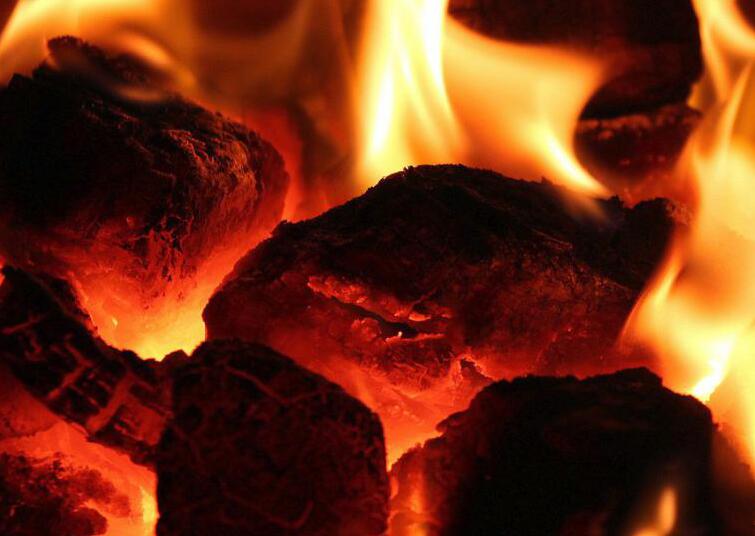
Advantages of Sintering
Sintering offers several advantages that make it a preferred manufacturing method in various industries. Let's explore some of the key advantages:
1 Complex Shapes and Intricate Designs
One of the significant advantages of sintering is its ability to produce components with complex shapes and intricate designs. By utilizing powdered materials, sintering allows for the formation of parts with intricate geometries that would be challenging to achieve using traditional machining techniques. This flexibility in shaping enables the production of customized components tailored to specific applications.
2 Improved Mechanical Properties
Sintering enhances the mechanical properties of materials, resulting in components with superior performance characteristics. During the sintering process, the particles bond and densify, leading to improved strength, hardness, and wear resistance of the sintered product. The controlled heating and diffusion mechanisms involved in sintering contribute to the development of a dense and cohesive structure, enhancing the overall mechanical integrity of the component.
3 Tailored Material Compositions
Sintering allows for the consolidation of powders with different compositions, enabling the production of materials with tailored properties. By blending different types of powders or incorporating additives, it is possible to modify the material's characteristics according to specific requirements. This flexibility in composition opens up possibilities for creating advanced materials with optimized performance, such as high-strength alloys or materials with specific electrical or thermal properties.
4 Cost-Effectiveness
Sintering is a cost-effective manufacturing method compared to traditional melting and casting processes. The use of powdered materials reduces material waste, as excess powder can be collected and reused. Additionally, the sintering process requires lower energy consumption since it operates at temperatures below the melting point of the material. The ability to produce near-net-shape components further reduces the need for subsequent machining operations, resulting in cost savings in terms of material usage, energy consumption, and post-processing.
5 Versatility in Material Selection
Sintering offers versatility in material selection, accommodating a wide range of materials for various applications. It is suitable for ceramics, metals, and composites. Different types of materials, including oxides, carbides, nitrides, and alloys, can be processed through sintering. This broad material compatibility allows for the production of diverse components with specific material properties, making sintering an attractive choice for multiple industries.
Sintering's advantages in complex shaping, improved mechanical properties, tailored material compositions, cost-effectiveness, and material versatility make it a valuable manufacturing process in various sectors. By harnessing these benefits, industries can achieve efficient production, enhanced performance, and cost savings in their manufacturing processes.
There are a lot of changes including complex physical and chemical changes. Physical and chemical reactions in powder sintering including the evaporation or evaporation of water or organic matter, removal of adsorbed gases, stress relief, reduction of surface oxides of powder particles, material migration, recrystallization, grain growth, etc. It is very important to learn and understand the sintering knowledge as a producer. And as the consumer, learning these basic knowledges can enable us to have a good idea when choosing sintering products.
Sintering is a traditional and complex process. Times are advancing, And production technology and production equipment are also constantly updated. Reserve basic knowledge and learn new knowledge is necessary to for industry-related personnel. For 18 years ago. HENGKO always insists on constantly improving itself, providing customers with good products and considerate services, helping customers and common development. We hope to become your reliable long-term partner.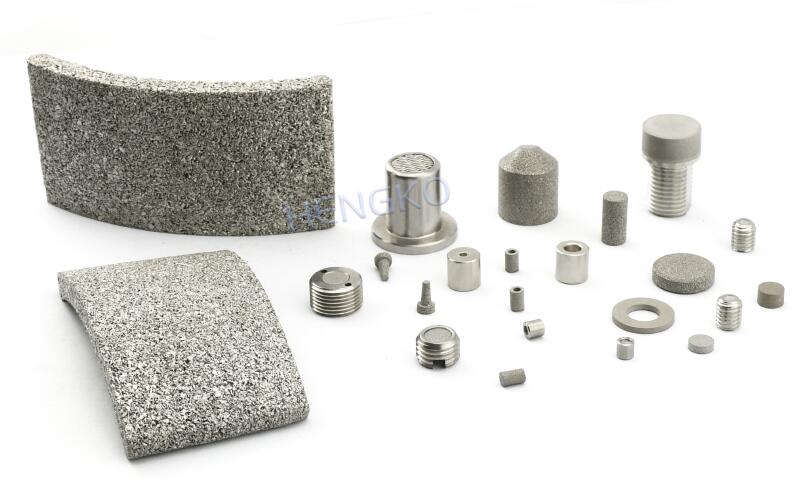
FAQs (Frequently Asked Questions)
What materials can be sintered?
A wide range of materials can be sintered, including ceramics, metals, and composites. Examples include ceramic powders like alumina and zirconia, metal powders like iron and sintered stainless steel filters, and composite powders containing reinforcement materials such as fibers or particles.
What are the advantages of sintering compared to other manufacturing methods?
Sintering offers several advantages over traditional manufacturing methods. It allows for the production of components with complex shapes and intricate designs, offers improved mechanical properties, enables the customization of material compositions, is cost-effective due to reduced material waste, and accommodates a variety of materials for different applications.
What are the main applications of sintering?
Sintering finds applications in industries such as ceramics, metallurgy, powder metallurgy, electronics, and additive manufacturing. It is used to produce ceramic tiles, automotive parts, metal components, cutting tools, electronic ceramics, and 3D-printed objects, among others.
Are there any limitations or challenges with sintering?
Sintering does have some limitations and challenges. Achieving uniform densification throughout the material can be a challenge, as uneven heating or particle distribution may result in defects. Controlling grain growth and preventing excessive shrinkage during sintering are also important considerations. Additionally, not all materials are suitable for sintering due to their high melting points or reactivity with the surrounding atmosphere.
What are the different types of sintering techniques?
There are various types of sintering techniques, including solid-state sintering, liquid-phase sintering, activated sintering, microwave sintering, pressure-assisted sintering, as well as specialized techniques like selective laser sintering (SLS) and electron beam sintering (EBS). Each technique has its unique mechanisms and is selected based on the specific requirements of the material and application.
How does sintering improve the properties of materials?
Sintering improves the properties of materials by promoting particle bonding and densification. During the sintering process, the particles undergo diffusion, leading to neck formation and increased density. This results in enhanced mechanical properties such as strength, hardness, and wear resistance. Additionally, sintering can lead to improved electrical, thermal, and chemical properties depending on the material and its composition.
Can sintered parts be machined or further processed?
Yes, sintered parts can undergo additional processing or machining, if required. While sintering can achieve near-net-shape components, there may be instances where further machining or post-processing is necessary to achieve the desired specifications. Machining processes like milling, drilling, or grinding can be employed to achieve the final dimensions or surface finish.
What are the environmental considerations of sintering?
Sintering is generally considered an environmentally friendly manufacturing process. It consumes less energy compared to melting and casting methods, and it reduces material waste by allowing the reuse of excess powders. However, it's important to consider the environmental impact of the raw materials used, as well as the proper handling and disposal of any byproducts or waste generated during the process.
How does sintering contribute to the development of advanced materials?
Sintering plays a crucial role in the development of advanced materials. By carefully selecting and controlling the composition, particle size, and sintering parameters, it is possible to tailor the properties of the resulting material. This allows for the creation of advanced materials with specific characteristics, such as high-performance alloys, functional ceramics, or composite materials with unique combinations of properties.
If you have any further questions or would like to get in touch with HENGKO,
please feel free to contact us via email at ka@hengko.com.
We would be delighted to assist you and provide any additional information you may need.
